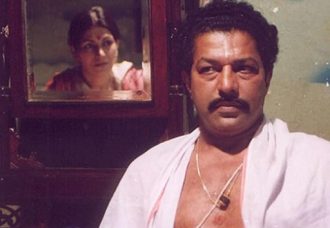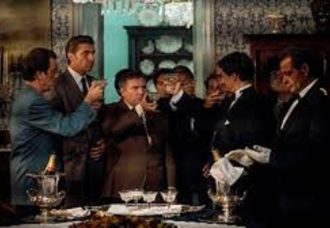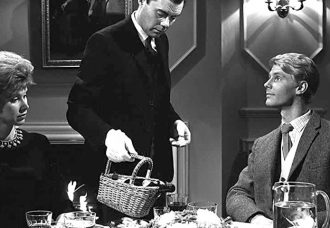Originality is an art that isn’t practiced everywhere. Unfortunately, Malayalam cinema too, as ‘Celluloid’ explicitly suggests, appears to have its roots in what is now a Hollywood classic.
Circa 1926, JC Daniel sells a portion of his ancestral land in order to make what would be the first Malayalam film. Its release is met with stiff opposition by the upper-class. Later, his six-year-old child burns the only copy. JC dies disillusioned, bankrupt, and unrecognized.
The treatment is fine: a focus on JC Daniel preparing for, making, and releasing his film in an atmosphere of male chauvinism and casteism is followed by a retrospective through the eyes of his biographer and a public apology by his son for setting fire to the film in his childhood.
But the script, albeit unintentionally, makes a mockery of both Dada Phalke (the father of Indian cinema) and JC Daniel. One would expect a pioneer with an overwhelming passion for cinema to greet a newcomer enthusiastically with a can of advice and inspiration; instead, Phalke briefly throws a few words of caution before springing towards his shooting sets comically.
Like his counterpart in ‘Harishchandrachi Factory’, the young JC is a happy-go-lucky fellow who brims with overconfidence and faces no major struggle. ‘Celluloid’ fails to show the trials and tribulations of the father of Malayalam cinema.
Even following his disastrous debut, JC is depicted as cheerful as before. Further, he studies for dentistry and sets up a decent clinic. Later, he sets off to Tamil Nadu. What exactly transpires there that is sufficient to radically change an exuberant-with-life character into a bitter pauper is left unexplained.
It is very probable that JC had an approach towards cinema that was serious. Sadly, rather than as an artist experimenting with a powerful new medium of expression, he is portrayed as an opportunist who loves the moving pictures for the sake of fame and fortune.
The opening half is as much his story as that of a Christian convert from the “untouchable” class; the poor girl who perhaps agreed to the role in real life solely for the extra income is falsely painted as having dreams of stardom; this, in an age and region that eyed a woman in cinema as a whore?
The daring act of casting a “low caste” woman as a “high caste” is incessantly highlighted, only to be crushed with a fallacious allusion to the father of American cinema; it is untruthfully stated that he was disowned by his industry and died in penury.
For the information of the writer-director: DW Griffith lived his last days in one of the fanciest hotels in Hollywood; constantly had lucrative film offers; and if he was strongly criticized it was majorly for wittingly or unwittingly (we may never know which) making a film that is blatantly racist.
Some of the peripheral material too is in poor taste. For instance, in the early days, new purchases such as a radio were welcomed into Indian households with utmost sacredness and children weren’t allowed anywhere around it; it is, thus, shocking to see JC leaning casually/carelessly on his precious new camera while a tiny tot fiddles with the tripod on which it rests precariously.
The focal depth adds background detail, and the brownish tone enhances the period look. Whatever the art direction lacks is pardonable given the limitations of the budget. The costumes are suspect.
And the makeup? Well, when JC makes his first aged appearance, his voice-over quivers to the visual of his lying-in-bed pair of feet pretty as that of a dainty dancer. And when he shows his face, his forehead and cheeks are smooth as a doll’s, though his beard is snow and his false neck is about to fall off.
Prithviraj’s tongue rolls out the Malayalam words with what is accepted as the Travancore accent of the early twentieth century, but his English has no dignity. And his facial expressions refuse to venture out of the confines of his star image.
Further, JC was an exponent of the sacred martial art of Kerala, and wanted to publicize it through cinema; thus, it is a crime that instead of a trained master as a body double an actor with awkward body movements was employed to reenact these deadly techniques.
Kamal’s biopic makes no effort to offer an authentic account of the first Malayalam film, which, ironically, was “inspired” by Chaplin’s first feature-length film.








